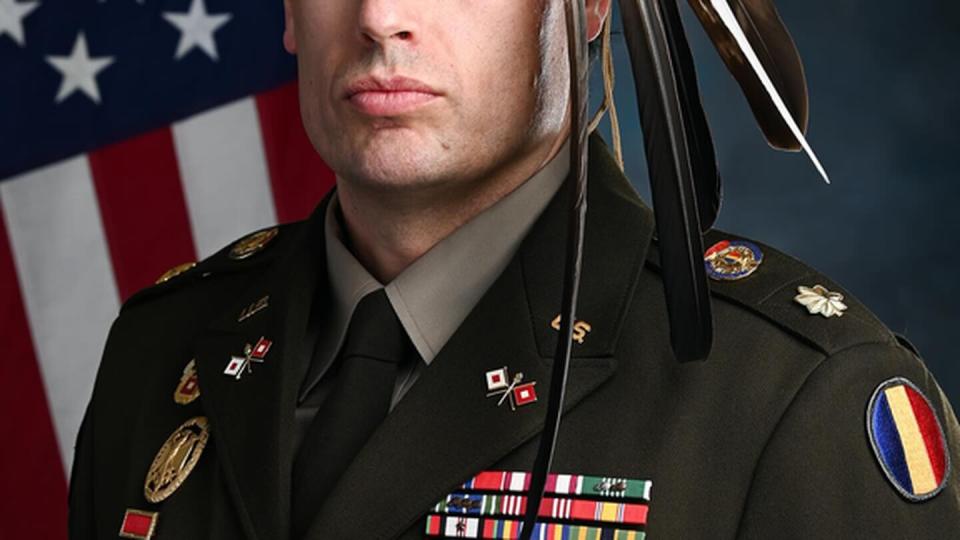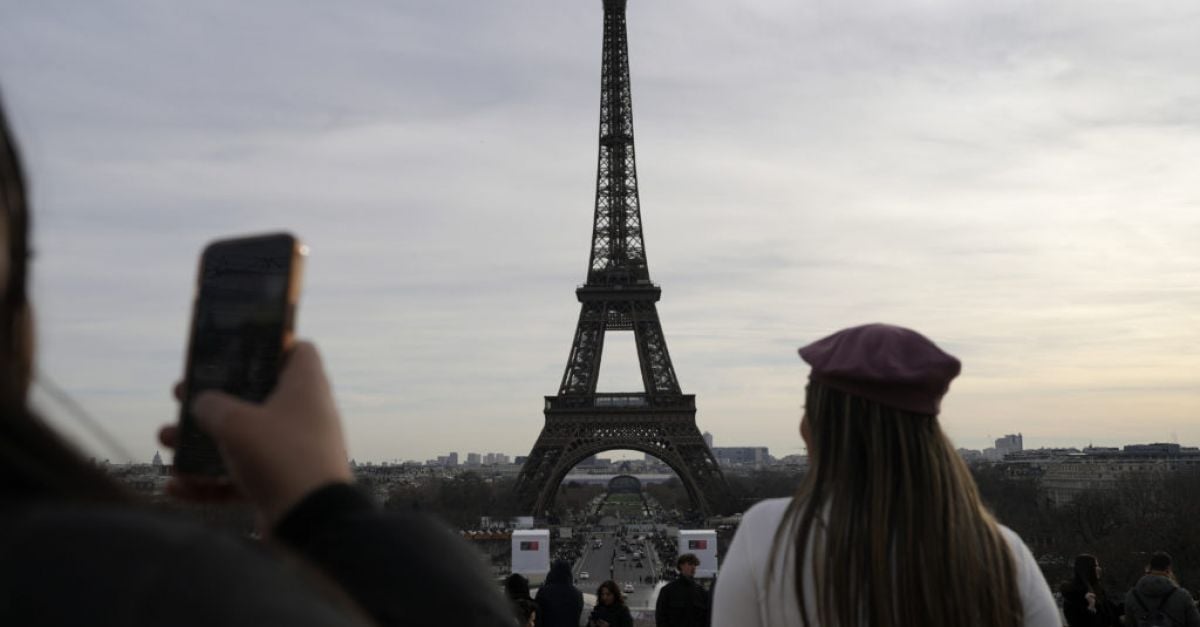An Army major is celebrating one year of having earned approval to wear his hair and tribe-specific regalia items in a way that honors his Native American heritage during appropriate service ceremonies.
Maj. Patrick Sorensen, a marketing and operations officer in the Army’s Training and Doctrine Command, shared photos online displaying his longer hair adorned with eagle feathers meant to commemorate fallen soldiers.
In a recent interview, the soldier shared more about the accommodation and the meaning behind the approved hairstyle and regalia.
Portions of this interview have been edited for length and clarity.
Can you discuss your background, service history and tribal affiliation?
I bounced around a lot as a kid, but I grew up mostly in Northern California, around the Humboldt County area.
I went to Humboldt State, where I got my bachelor’s degree in chemistry. And after that, I couldn’t find a job I thought I would be able to get after college, being a first generation four-year college student.
So, I joined the Army to do the student loan repayment program. Turned out I was pretty good at it, so I continued on and eventually went to Officer Candidate School and became a signal officer. I did that for about 10 years. In the last few years, I’ve transitioned to this marketing officer role.
To give more background, my mother, she is white. My father, he’s Native American and German. He grew up on the reservation in Grand Ronde, Oregon. I’m a member of The Confederated Tribes of Grand Ronde, which is our federally recognized tribe. Being a confederated tribe means during the consolidation period … several tribes were brought together onto one reservation.
So, by blood I’m both Umpqua and Rogue River. Altogether, we have over 30 tribes and bands in our one federally recognized tribe, so it’s kind of a melting pot, even for one tribe.
Why was it important to you, your community and faith to request this accommodation? What was that process like?
I joined the Army in 2006. … I was a specialist. My mother passed away in 2009. And after that, I shaved my head and I actually kept my head shaved for about the next 10 years.
I was taught that our hair represents our spirit and our strength. There are a lot of different beliefs across North America about whether it actually physically holds power. Is it more symbolic in the religious sense of that growth, or that power, or that strength or that courage? For me, I do believe in the importance of hair. Now, if a little bit gets cut off, do I feel like something weird is going to happen? No. But it’s really important, culturally.
Aside from the hair’s own specific spiritual, religious significance, it’s also — if we’re using military terms — the fastening device that’s necessary to wear eagle feathers. And eagle feathers are the second part of the accommodation that I received. There are also different beliefs around eagle feathers — they can mean multiple things. For me, I wear my feathers in military uniform to represent my fallen soldiers. I have one additional feather that I wear, which I received from the spiritual leader of the Seneca Nation.
The group aiming to stop ‘endemic’ suicide among Native American vets
I was doing recruiting activities for West Point at a large Native American organization that focuses on STEM education for Natives. While I was there I met some Air Force women in charge of INET, which is the Indigenous Nations Equality Team. They actually were there speaking about religious accommodations for Native Americans in the Air Force. As soon as I heard them speak a light bulb went off, because I didn’t really think that was something that would be possible. I had wanted to grow my hair longer than regulation for a while, but I didn’t think that I could.
There’s no new regulations. This is actually the same religious accommodation under AR 600-20 as anyone else would follow. The difference is, because we have such a diversity of different beliefs, and backgrounds and cultures as Natives, it makes it a lot more complicated. We have different regalia items, which is kind of like our religious decor that we’d wear. And the hair can be cut in different ways. And so each accommodation is going to be a little bit different.
When were you granted approval? And what was your reaction?
It was signed on May 20, 2023. I was extremely excited. I was overjoyed.

Have others in the Indigenous community expressed interest in following your example?
What really happened was, my photos went viral. It was not on purpose. I originally posted it to Facebook … and then it kind of took off from there.
I am now up to 58 Native American soldiers who have reached out to me for support. And I’m not counting a handful of sailors and airmen who also reached out.
Can you discuss the importance of service in the American Indian/Alaskan Native community?
Native Americans serve at a higher rate than any other racial demographic. And the simple explanation for that is we’re a warrior culture. It’s kind of baked into our culture.
Of course, we can be warriors in other ways. We can be leaders in the community without picking up weapons.
But as far as the military force is concerned, that is our modern equivalent to being warriors and being able to serve as warriors.
Are there other challenges or opportunities you’re interested in sharing for Native American troops?
You know, there are a lot of mixed feelings about military service in the Native community. Like I said, we generally are a warrior culture, and a lot of us choose to serve. But some tribes and some communities are a little bit against service. One of the reasons might be because of leaving your tribe or leaving your family — it can be hard.
For me, it was an opportunity to up my income, based on what was probably expected from my family background, and to be able to buy a home and do some of these things that I think every American dreams about.
When it comes to making higher ranks and having a seat at the table for large decision making discussions, I would love to see more Native Americans in positions like that.
Signup bonus from




